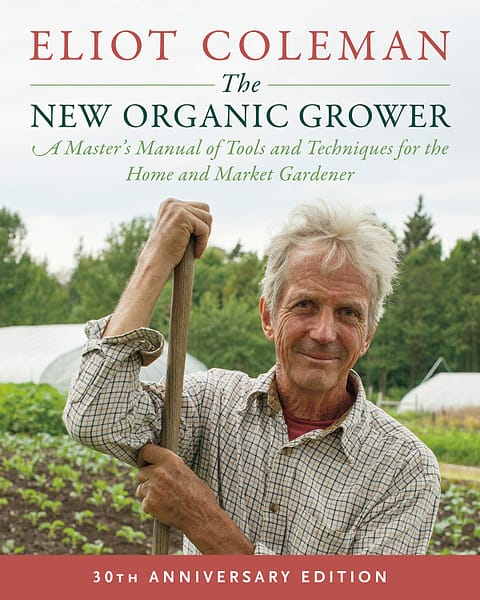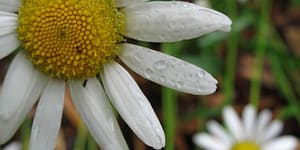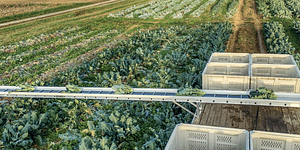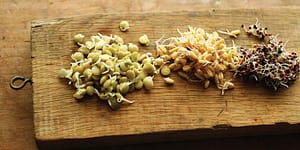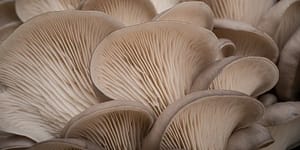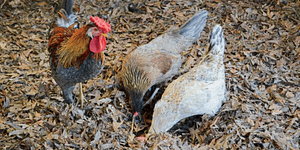Getting Wild: Take A Walk on the Wild Side

John and Nancy Hayden have spent the last quarter century transforming their organic vegetable and livestock operation into an agroecological, regenerative fruit farm, nursery, and pollinator sanctuary. They call it The Farm Between, and as we walk among the diverse medley of wildly burgeoning shrubs and trees, it becomes clear that the name is much more than a geological marker. It’s emblematic of the Haydens’s experimental approach, which is less about imposing their will on the land and more akin to learning how an ecosystem can repair itself if given the chance. The following conversation with John digs into the philosophical and scientific ideas presented in their book, Farming on the Wild Side.
The following is an interview with John Hayden from the Winter 2019 Seasonal Journal. It has been adapted for the web.
This was not a prosperous farm when we bought it. They’d gone out of business. It looked nice. Everything was mowed and edged and painted, like a picture you see on a milk carton. Now, this is what a prosperous farm looks like. It’s scruffy. It’s chaotic, but it’s a planned chaos. We’ve got to rethink “pretty.” We have the functional beauty of all the biodiversity going on. We’re supporting the pollinators and the birds with all this habitat. There are beneficial insects living here eating up the pests, so we don’t need any pesticides or fertilizers. I came out this morning and saw a bunch of monarch butterflies. We purposely cultivate milkweed, so we’re getting a decent population here.
We used to grow vegetables, but [The Farm Between] is in a flood zone. When we lost a crop, we decided we needed to switch things up. Now we have aronia, black chokecherry. This is an awesome plant. It has the highest antioxidants that you can grow. It’s very cold hardy, and it’s beautiful. The leaves all turn red in the fall.
We’re constantly experimenting. . . . We planted apple trees on 20-foot spacing and then put cover crops in the alleys that also serve as pollinator habitat. It’s got a mix of different species . . . some perennial vegetables, like sea kale. [Sea kale] produces a loose floret that’s really delicious. We’ll just let it go to seed this year to see what happens.
Letting plants do what they naturally do to learn about them is intuitive and makes a ton of sense.
Yes, we spend a lot of time just observing. An apple orchard is what we want, so we’re trying to find out what works in between. All this biodiversity helps us keep our pest population stable. We don’t have big outbreaks. We can take a 10 percent loss, and it’s no big deal because we don’t have any inputs. We’re not applying pesticides and avoid all the effort that goes with that.
Is it more profitable as far as your gain? Your harvest?
The harvest might be lighter than a commercial apple crop, but because our inputs are less, the profit’s better. We don’t have the expenses that commercial, monoculture growers have. The monoculture mentality is not ecological thinking, and we’re paying the price. The costs are put off onto society with the pesticides and the run-off and the soil erosion—all these negative things. We’re reimagining a transformational way of farming that doesn’t put costs on society. We’re bringing benefits to society: We’re sequestering carbon; we support pollinators and other wildlife; we’re slowing down the water with all these plants and root structures and pulling all the nutrients out of the water before it flows off our land.
Even our ditches are full of trees that suck out the phosphorous before it goes downstream. The whole watershed drains through our farm, so the trees down in the riparian zone act as filters in addition to storing carbon. We use them for woodchips for mulch. We cut them and coppice them, and they grow back. Everything’s working together. We’re trying to stack as many functions as we can into this space.

They can’t afford to lose 10 percent of their crop. Here, we have about 30 different crops, so if I lose even 20 percent of my apples, some other crop is going to make up for that. Every year, some crops are stellar, some are mediocre, and some are bad, but it all balances out to be good.
We’re not just tweaking a broken system; we’re developing a better one. We don’t have all the answers. We’re still playing around and observing and figuring things out, but we’ve got some good leads. We’re interacting. We’re immersed in this, and we’re watching, revamping, and learning. And we’re doing okay!
Economically, we’re a lot stronger than when we were livestock or vegetable farmers. We’re growing higher value products and have found great markets for them. It may appear helter skelter, but a lot of thought goes into how we farm. We try to figure out the least amount of work we can possibly do and still make a decent living—and be doing good for our environment. We’re not trying to maximize profit or maximize yields. We’re trying to find that optimal balance.
Through all these efforts, it’s as though you’re reseeding nature, even though the traditional definition of nature doesn’t involve people. Maybe people have to be involved in creating a “new nature” because there’s not enough “pure nature” left.
We do! We’ve got to find ways to make a living by keeping the planet alive, not by extracting and damaging our systems beyond repair. Nancy and I are really interested in not tilling the soil, for example, because tilling the soil wreaks all kinds of havoc on that ecosystem, too. Churning things up adds oxygen, and the bacteria go crazy and start burning up the organic matter. We like to keep things covered and not disturbed. We’re as hands off as we can be.
Everything we do is intentional with the ecology in mind. That’s what we’re trying to model here. We love exchanging ideas and inspiring people. We love garnering lessons from different approaches, like permaculture and biodynamic farming. And we love our monarchs! Just look at them!
Recommended Reads
Recent Articles
Oxeye daisies are one of the most important plants for pollinators including beetles, ants, and moths that use oxeye daisies as a source of pollen and nectar. Instead of thinking about removing a plant like oxeye daisy, consider how you can improve the fertility and diversity of habitat resources in your home landscape, garden, or…
Read MoreSo you want to start reaping your harvest, but you’re not sure where to start? Learn how to break down the options of harvesting tools!
Read MoreWhat’s so great about oyster mushrooms? First, you can add them to the list of foods that can be grown indoors! They are tasty, easy to grow, multiply fast, and they love a variety of substrates, making oyster mushrooms the premium choice. The following is an excerpt from Fresh Food from Small Spaces by R. J.…
Read MoreEver heard the phrase, “always follow your nose?” As it turns out, this is a good rule of thumb when it comes to chicken manure. Composting chicken manure in deep litter helps build better chicken health, reduce labor, and retain most of the nutrients for your garden. The following is an excerpt from The Small-Scale Poultry…
Read More




